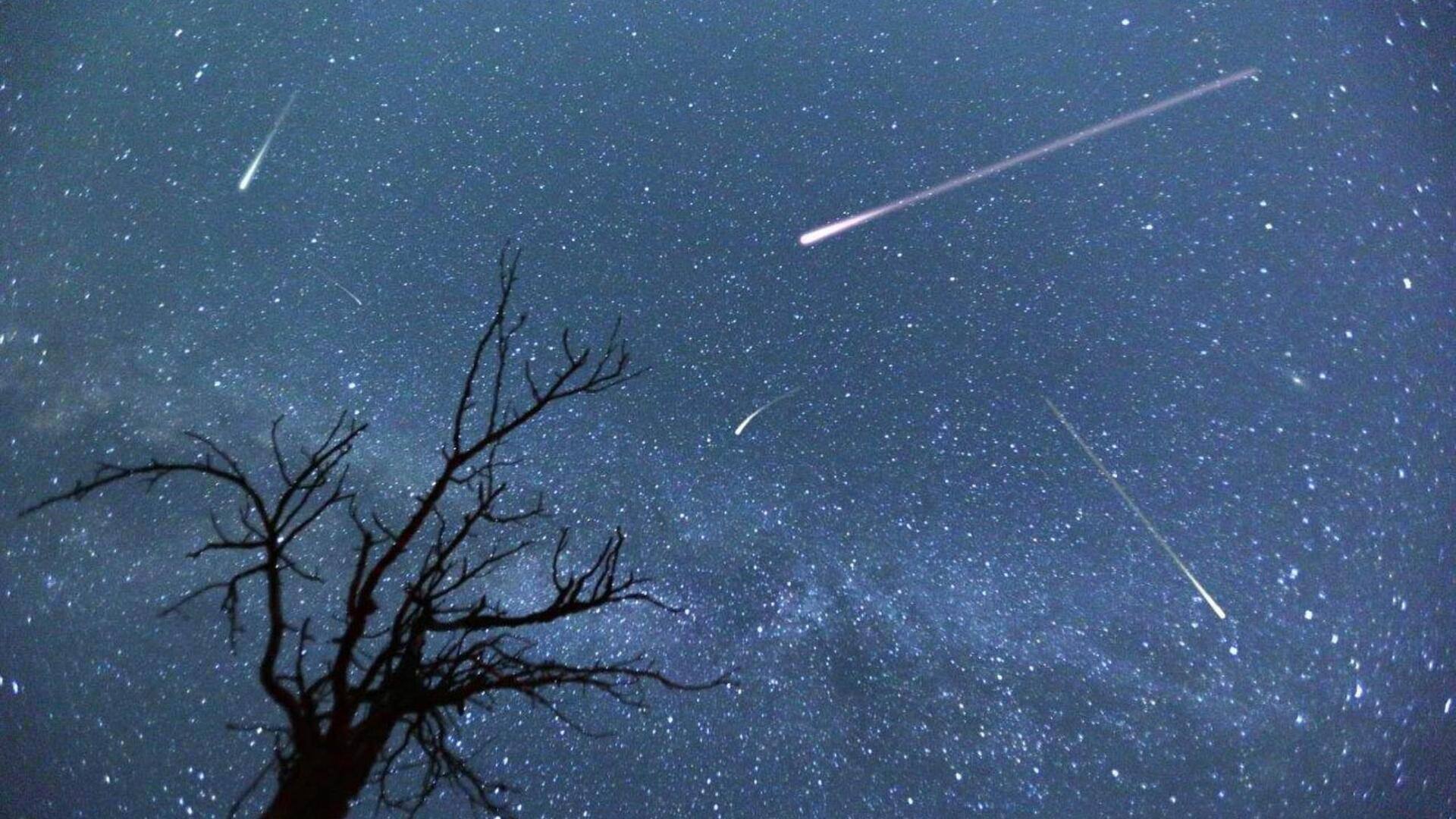
Orionid meteor shower peaks this week: How to watch
What's the story
The annual Orionid meteor shower, which is caused by the debris of Halley's comet, will peak this week.
The phenomenon takes place when Earth travels through a trail of meteoroids left by the comet in our solar system.
The Orionids are named after the constellation Orion, which rises into the autumn sky at this time of the year.
Peak timing
Orionid meteor shower: Peak time and viewing conditions
The Orionid meteor shower is active from September 26 to November 22.
The peak of this event is expected in the early hours of Monday, October 21, with an estimated rate of around 23 "shooting stars" per hour, according to the American Meteor Society.
The exact peak is predicted to occur at 1:00 am EDT (10:30 am IST).
Viewing challenges
Moonlight may affect visibility
The visibility of the Orionid meteor shower may be hampered by a waning gibbous moon, which will rule the sky for most of the night.
The American Meteor Society warns that bright moonlight could "severely hamper" views of this display.
Despite these less-than-ideal conditions, stargazers are encouraged to watch from home in hopes of catching a particularly bright shooting star.
Meteor characteristics
Orionids: A spectacular display of speed and brightness
NASA describes the Orionids as one of the year's most beautiful meteor showers, thanks to their brightness and speed.
These meteors are fast, hitting Earth's atmosphere at a speed of 66km per second or roughly 238,000km/h.
Meteor showers such as the Orionids are caused by clouds of dust and debris left in our solar system by comets as they loop around the sun.
Dual displays
Orionids and Eta Aquarids: Halley's comet's dual meteor showers
The Orionids are one of the two annual meteor showers caused by Halley's comet, the only known naked-eye comet that can theoretically be seen twice in a human lifetime.
The other shower is the Eta Aquarid meteor shower, which peaks in early May each year.
Both these celestial events can be observed from the Southern as well as Northern hemispheres.